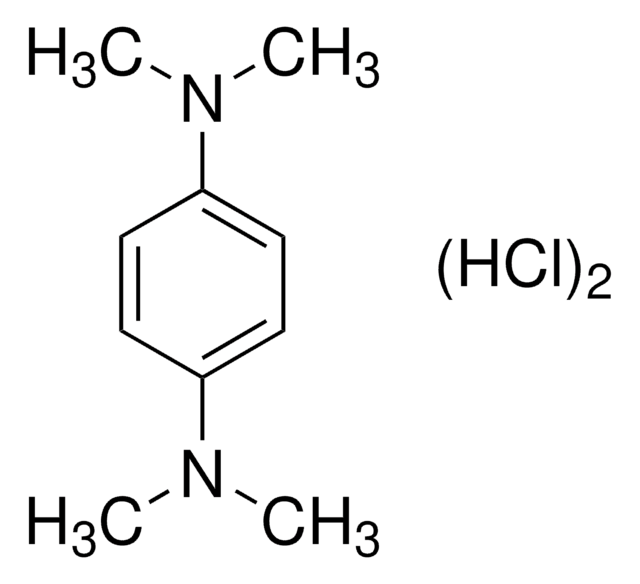07345
Oxidase Reagent according to Gaby-Hadley A
suitable for microbiology
Synonyme(s) :
Gaby-Hadley Reagent A
About This Item
Produits recommandés
Agence
according to ISO 9308-1:2014
Niveau de qualité
Gamme de produits
BioChemika
Durée de conservation
limited shelf life, expiry date on the label
Composition
ethanol (95%), 100 mL
α-naphtol, 1 g
Conditionnement
pkg of 100 mL
Conditions de stockage
(Tightly closed. Dry.)
Technique(s)
microbe id | specific enzyme detection: suitable
Spectre d'activité de l'antibiotique
Gram-negative bacteria
Application(s)
agriculture
clinical testing
environmental
food and beverages
pharmaceutical
microbiology
Adéquation
Plesiomonas spp.
Aeromonas spp.
Neisseria spp.
Pseudomonas spp.
Description générale
Application
Mention d'avertissement
Danger
Mentions de danger
Conseils de prudence
Classification des risques
Eye Irrit. 2 - Flam. Liq. 2 - Skin Sens. 1
Code de la classe de stockage
3 - Flammable liquids
Classe de danger pour l'eau (WGK)
WGK 1
Point d'éclair (°F)
57.2 °F
Point d'éclair (°C)
14 °C
Équipement de protection individuelle
Faceshields, Gloves, Goggles, type ABEK (EN14387) respirator filter
Faites votre choix parmi les versions les plus récentes :
Déjà en possession de ce produit ?
Retrouvez la documentation relative aux produits que vous avez récemment achetés dans la Bibliothèque de documents.
Les clients ont également consulté
Articles
Vibrio Detection
On the Trail of Campylobacter
Chromogenic media enable the selective detection of S. aureus, which produce bluish-green colonies that are clearly differentiated from other species.
For microbiologists the most fundamental stain was developed in 1884 by the Danish bacteriologist Hans Christian Gram.
Protocoles
General guidance for the detection and enumeration of Enterobacteriaceae in food according to EN-ISO 8523:1991 and EN-ISO 4832:1991, respectively.
In recent years it has been recognized that Listeria is an important public health problem. The disease affects primarily people of advanced age, pregnant women, newborns, and adults with weakened immune systems.
In recent years it has been recognized that Listeria is an important public health problem. The disease affects primarily people of advanced age, pregnant women, newborns, and adults with weakened immune systems.
Contenu apparenté
Chromogenic media enable the selective detection of S. aureus, which produce bluish-green colonies that are clearly differentiated from other species.
Notre équipe de scientifiques dispose d'une expérience dans tous les secteurs de la recherche, notamment en sciences de la vie, science des matériaux, synthèse chimique, chromatographie, analyse et dans de nombreux autres domaines..
Contacter notre Service technique


